The words “full moon” in many languages

It is said that there are more than 6,000 languages worldwide (this is hard to imagine) and it is a fascinating concept to think, there are probably as many words for “full moon”.
Here we begin our little journey to the full moon. A few words about the fascinating quest of the greater purpose, that includes the full moon circulating through our lives. In layman’s terms and not always scientific (astronomy experts – don’t look too closely!). We would like to wish you illuminating moments. Enjoy!


It is said that there are more than 6,000 languages worldwide (this is hard to imagine) and it is a fascinating concept to think, there are probably as many words for “full moon”.
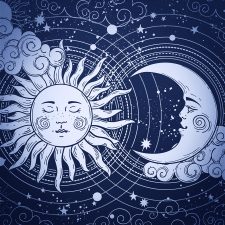
A full moon is when the Sun and the Moon are facing opposite, being in opposite direction from an Earth perspective.
This might feel astonishing if one imagines that the Moon is on one side, the Sun on the other and the Earth in between? Shouldn’t the Earth throw a shadow onto the Moon? Bingo – this is exactly what she does! But only when the Moon is exactly on the Earth orbit, the so called “ecliptic”. When this takes place, we speak of a lunar eclipse!
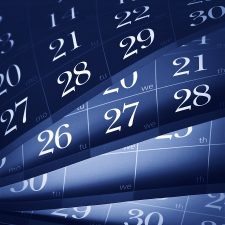
The Moon needs 27.33 days to circle around the Earth. Something that is also referred to as “sidereal time”. But because the Earth orbits the Sun, just like the Moon orbits the Earth, the Moon has to travel two further days in order to resume the same position to the Earth and Sun. This is then called the “sidereal time”. In order to determine the point of time of the reoccurring full moon, the sidereal time serves as basis.
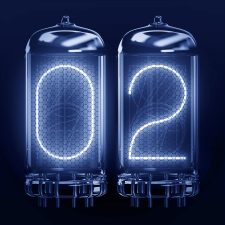
We already know now that the moon month is mostly shorter than the calendar month, being on average approximately 29.5 days. If full moon falls on the first or second of a month, it is possible that another full moon occurs in the same month, for instance in July 2004:
Friday, 2 July 2004, 01:08:54 pm
Saturday, 31 July 2004, 08:05:06 pm
This event is also known as “blue moon”.
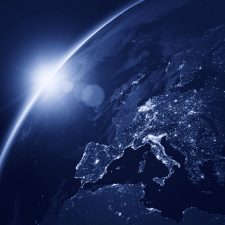
The answer is: “everywhere at the same time”. This refers to the so called Universal Time (UT) though, which is used for general astronomical events. We have already learnt that full moon is an astronomical event, where the moon, sun and the earth play a role by being in a specific position. So, full moon takes place at a specific time in the outer space. This point of time is specified by astronomers namely by the Universal Time.

There are multiple ways of approaching this question. If we look at it from a purely theoretical standpoint, we might be tempted to say that the full moon is infinitely short, since the phases of the moon are changing continuously. The moon is not yet quite full shortly before the full moon, and is already waning shortly afterwards.
However, there is a practical aspect that lets us quantify the full moon as a finite and measurable span of time: Since the Sun is significantly bigger than the Moon, its rays are able to reach just a little over half of the Moon’s surface. This means that the timespan in which the visible side of the Moon’s surface is irradiated (as seen from Earth) is longer than infinitely short.

Whether scientists, astrologers or esoterics, they agree on one thing: the moon influences earth and life on earth. For instance, it regulates the tides through its magnetism. Also continents feel the consequence of this magnetism and either raise or lower their position sometimes up to 26 cm.

In nature it is a known fact: for some animal species, mating takes place at full moon. However, the examples that can be found on this subject are rather simple. Full moon serves in some cases indirectly as the cause (for instance through the high water levels during the tides that the horseshoe crab uses to deposit its eggs) or also as the signal for both sexes of a species to begin at the exact same time to safeguard their future existence (a particular type of fly or also corals). It is understood that also wolves are led by full moon when it is time to mate.

… that people are looking for an argument at full moon or are especially happy …
… that if full moon is surrounded by a haze, a person dies …
… that you raise your hat three times to the moon (being a man) or you make a curtsey (being a woman), in order to protect yourself from misfortune until the next full moon …
… that whoever does not chink glasses with full moon at least once, does not deserve any happiness [Greek toast] …
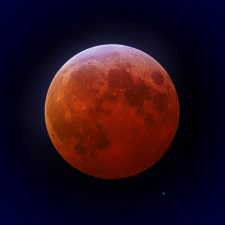
During a lunar eclipse, the Moon moves through the shadow of the Earth. Which means, that the Earth is positioned quite exactly between the Sun and Moon and casts its shadow onto the Moon. This is only possible at full moon and if some other requirements are met. Depending on whether the moon passes the partial or the core shadow of the Earth, we speak of a partial or total lunar eclipse.

Especially, because many people report that they are a bit
»out of it« at the full moon, it seems natural to think that more accidents could happen during this time. There are several studies [*], which have carefully examined both, the full moon and also other moon phases with the continuous identical result: no recognisable correlation between the moon events and accidents.

Fitting into the Christmas period, we are hanging up a virtual mistletoe and calling upon all lovers out there to kiss each other! The custom has a long tradition in many countries. The symbolism of fertility and vitality play as much a part as the search for the possibility of making the kiss in public socially acceptable. The mistletoe helps to overcome the inhibition, which can stand especially between two people before their first kiss. And incidentally, for every kiss one berry of the bush is plucked – until no berries are left.

“Lady and the Tramp” made in 1955, belongs to one of the most beautiful and most successful cartoons by Walt Disney. The story of the elegant female dog Lady and the fun-loving vagabond Tramp, shows how love can overcome social boundaries. In reality, this is of course a human issue and not one of our four-legged friends. However – as usual with Disney – it has been staged simply convincingly. And this is how a good acquaintance joins Lady and the Tramp in the nightly scenery: the full moon.

A moon bridge is a pedestrian bridge, of which the semicircular arch completes a full circle through its reflection in the water and reminds of the full moon. In the old days, the high arch especially, served the purpose for barges to comfortably pass through underneath. Moon bridges originate in the Asian culture and were often built in Japanese and Chinese gardens. The mostly used materials were wood, stone and metal.
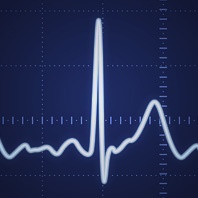
Quite a lot! The date of Easter is actually determined by the full moon. Quite contrary to Christmas, the Easter date is part of the changing holidays and defined as follows: “Easter is on the Sunday after the first full moon in spring.”
At first glance, this appears to be quite easy: one look at the calendar, beginning of spring is mostly on 21st March and then simply search for the next full moon and the weekend after will be Easter.
The American-British space thriller »Gravity« of 2013, offers next to its extraordinary suspenseful action, breathtaking images of space that show apart from the Earth and the Sun also the Moon. The director of the movie is Alfonso Cuarón (who also directed Harry Potter and the Prisoner of Azkaban). The movie is commercially very successful and has already brought in the multiple of its production cost, shortly after its release.

While the waste problem continues to assume serious dimension on our planet, we find, when examined more closely that people do not only leave trash behind on Earth. Thus, there are tons of scrap metal from satellites and rockets, which circle around the Earth, and also on the deserted Moon there is already a lot of waste that has been left behind by astronauts on their missions. Furthermore, there are countless space probes on the Moon, which were deliberately smashed or landed there, after relevant images and data had been transmitted to Earth. Clearly, it appears to be part of human nature to produce waste and to spread it everywhere on a large scale.

The full moon has always been a companion through time, through months, through seasons and the entire year. In the early days even more so, because daily life of people had not been strictly ruled by the clock yet. It was the sun that determined the day and the moon that brightened the night. Nowadays, clock and calendar are our time scales, which is advantageous but also contains a dark side. You unlearn more and more to estimate time periods and to experience them consciously. We have almost forgotten to perceive how different a full moon feels like in December compared to a full moon in July …
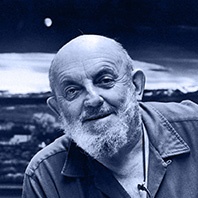
Ansel Adams (1902–1984) was one of the most influential photographers in the US, who particularly became famous for his magnificent black and white photography of American landscapes and national parks. He is the role model of many photographers and set standards with his shots. And as chance would have it, one of his most renowned photographs is an image with the rising Moon in New Mexico.
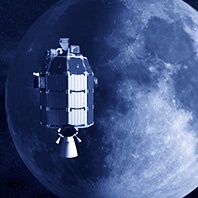
As reported back in September 2013, NASA sent the lunar probe LADEE (short for: Lunar Atmosphere and Dust Environment Explorer) into space, to circle and to explore the Moon. Especially, the formation of ice at the lunar poles has been of great interest. The space probe also collected measurement data of dust particles and gases that are close to the Moon’s surface.